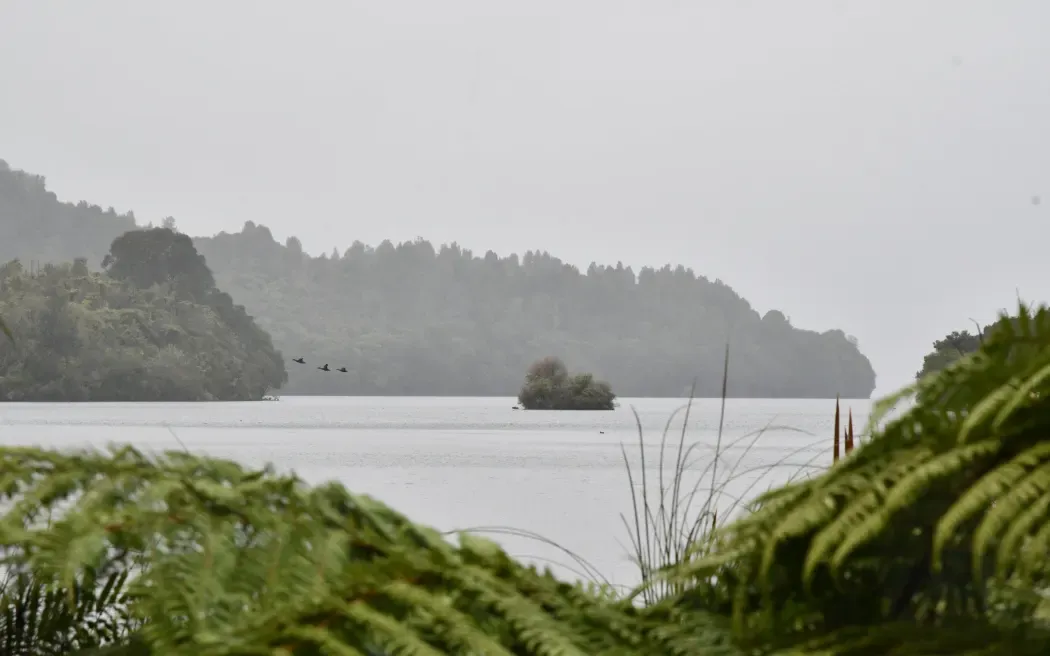Rotorua Sewerage Scheme: A Controversy Over Water Quality and Misleading Figures
The Rotorua Lakes Council has faced criticism for publishing inaccurate information about its $29 million Lake Tarawera sewerage scheme. The council claimed that daily wastewater soaks to the ground and enters the popular fishing lake were producing “more than 200,000 liters” of wastewater. However, a former TV presenter claims this figure is “propaganda” and “physically impossible.” In this article, we will explore the controversy surrounding the sewerage scheme, the misleading figures, and the council’s response to the criticism.
Background
———-
The Lake Tarawera sewerage scheme was introduced after a decade-long study found that reticulated sewerage would reduce nutrient levels and pathogens flowing into Lake Tarawera. The scheme aimed to upgrade wastewater systems for around 450 affected households. However, connection costs were estimated at $50,000 each, making it unaffordable for many residents.
The council recently placed posters in public toilets around the lake listing “the facts” about the scheme, which included a figure of daily wastewater soaks of more than 200,000 liters into the ground and entering Lake Tarawera. This claim was later disputed by former TV presenter Geoff Thomas, who viewed the figures as misleading and “propaganda.”
Misleading Figures
—————–
The council’s original figure of 300,000 liters per day for wastewater soaks was reduced to between 200,000-300,000L. However, this still seems excessive considering the actual water quality reported by Land, Air Water Aotearoa as excellent.
Critics argue that septic tanks alone cannot produce such high amounts of wastewater. According to Stavros Michael, infrastructure and environment group manager, the leaching estimate was based on average estimates of water use and how septic tanks work. The estimated average daily wastewater soaks were calculated from 252,000 liters a day for 450 households.
However, Geoff Thomas pointed out that the council had no data on how many properties at Lake Tarawera were permanently occupied, leading to an overestimation of the number of septic tanks affected.
Council Response
—————-
The Rotorua Lakes Council acknowledged the mistake and apologized for any confusion it may have caused. They removed the posters from their website that included the incorrect figure, as well as other misleading information about wastewater soaks.
In response to criticism, Michael explained that the council’s intention was to provide key information about the scheme in light of concerns about the pipeline route. He stated that reticulation and maintaining sewerage and stormwater discharge infrastructure was the council’s key contribution to lake water quality.
However, critics argue that the council oversimplified its rules and should have specified resource consent for new or upgraded septic tank systems was unlikely to be granted where reticulation was available.
Impact on Lake Water Quality
—————————–
The controversy surrounding the sewerage scheme highlights the ongoing issues with Lake Tarawera’s water quality. The regional council has implemented various measures, including reticulation and developing environmental management plans for all farms in the catchment.
However, critics argue that more needs to be done to address the long-standing problems with lake water quality. The council’s response to the controversy highlights the need for transparency and accurate information when it comes to environmental issues.
Conclusion
———-
The Rotorua Lakes Council’s $29 million sewerage scheme has sparked controversy over misleading figures and inaccurate information about wastewater soaks into Lake Tarawera. While the council has acknowledged its mistake and apologized for any confusion caused, critics argue that more needs to be done to address the long-standing problems with lake water quality.
In conclusion, the controversy surrounding the sewerage scheme highlights the need for transparency and accurate information when it comes to environmental issues. It also underscores the importance of addressing long-standing problems with lake water quality and ensuring that residents have access to affordable solutions.
Recommendations
—————–
* The Rotorua Lakes Council should provide more detailed information about the sewerage scheme, including accurate figures on wastewater soaks and the impact on Lake Tarawera’s water quality.
* The council should work closely with residents and experts to develop effective solutions to address lake water quality issues.
* Further research is needed to understand the long-term impacts of the sewerage scheme on Lake Tarawera’s ecosystem.
By taking a more transparent and collaborative approach, the Rotorua Lakes Council can build trust with its residents and ensure that environmental issues are addressed in a timely and effective manner.

0 Comments